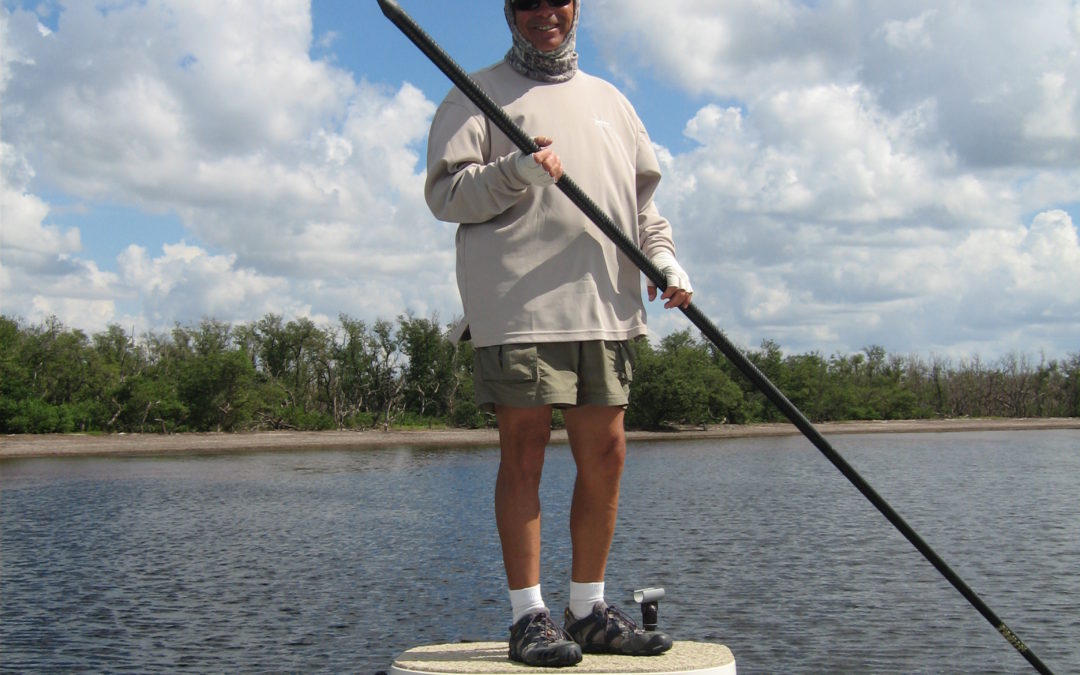To this day, I still have vivid childhood memories of the crystal clear water between the mangroves in Key Largo loaded with snapper that would be more than happy to eat the shrimp we dropped below. In contrast, I also remember in those days walking out onto the Naples pier and staring at wall to wall snook lying below. And, in this case, it didn’t matter what you did, they would just stare back at me and would not eat anything.
Maybe, it is these early memories that make me appreciate and want to keep sightfishing. And, many anglers will agree as well that sightfishing is definitely one of the most exiting ways to fish. Whether stalking tailing redfish, drifting with tarpon rolling early in the morning, or watching snook hang around docks under the lights at night, a visual type of situation can really get the heart pumping.
Nevertheless, you know the old saying, if you can see the fish, they probably saw you first. And, in many cases, this is enough to shut them down and really make it difficult to get them to eat. So, it got me to thinking, how much is too much of a good thing? Well for openers, I wouldn’t pursue the sport if I didn’t think it was effective. From the poling platform, on many occasions I have spotted fish moving down a shoreline and have watched as the angler on the bow led the fish resulting in a take. And, I have also seen lots of fish move on while ignoring the presentation. Most likely, it is the takes that keep me coming back for more.
To put it all in perspective, when it comes to sightfishing over the shallow tidal flats, I believe we need to extend or expand our perception of literal sight fishing to include more than looking for an exact visual target. Sure, there are many occasions where a school or even a lone fish can be singled out visually. And in all these cases, I will attempt to present a bait. On the other hand, I have also had a lot of fun out on a flat or shoreline looking for visual signs from a broader perspective and then using long casts to probe the entire area. For example, the next best thing to actually sighting a fish is when you see them pushing water. And, the advantage here is that you can see this from a long distance. So, if you are quiet and able to make long casts, the fish will not be aware of your presence and the odds of getting them to eat is dramatically improved. And, even if it ends up just being mullet pushing water, the chances that gamefish will be close are pretty good. Mullet stir up quite a bit off the bottom and help provide an easy meal for any hungry predator.
In addition to seeing water being pushed, if you are moving down a flat and begin seeing little clouds of mud scattered about, there is a good possibility you blew some fish out. In this case, let things quiet down a bit and begin working the area. After fanning the immediate area, move down the flat a little more and cover some more ground. Still another obvious sign that fish are active on a flat is the sight of bait being busted at the surface. And this particular event can really be seen from a long way off.
Essentially, all these scenarios still fall into the category of sightfishing with the added benefit of limiting the probability that the fish can see you as well. And as previously mentioned being able to cast long distances will really improve your chances under these conditions. To accomplish this, a longer 7’6” or 8’ medium power fast action tipped rod rated for 8 to 17 lb. line will help. Also, remember that a thinner line will cast further than a heavier thicker line. So, it might not be a bad idea to rig one setup with monofilament as light as 8lbs. in case you’re having trouble reaching the target area. Even better, try rigging with some 15lb. braid, which has the same diameter as 5lb. mono, and you’ll get even more distance. And, no matter which type of line you prefer, make sure the spool is full. A full spool will always allow you to throw for more distance. Also, keep in mind, a heavier lure on the end of your line will also provide more distance. For example, a ¼ oz. jig will throw farther than a 1/8 oz. jig. In addition, you can always add a popping cork to your soft plastic or feathered jig to even get more distance. And of course, you can usually throw a plug a country mile.
So mostly, if we back off a little bit and learn to sight fish from a distance instead of up close where the fish also has a sight advantage, we might find ourselves sneaking up on some unsuspecting fish that are willing to eat.


Recent Comments